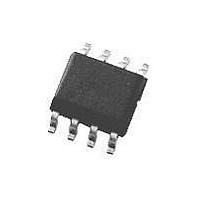LM386M-1 National Semiconductor, LM386M-1 Datasheet - Page 3

LM386M-1
Manufacturer Part Number
LM386M-1
Description
Audio Amp Speaker 1-CH Mono 0.325W Class-AB 8-Pin SOIC N Rail
Manufacturer
National Semiconductor
Datasheet
1.LM386M-1NOPB.pdf
(9 pages)
Specifications of LM386M-1
Package
8SOIC N
Function
Speaker
Amplifier Type
Class-AB
Typical Voltage Gain
46 dB
Total Harmonic Distortion Noise
0.2@8Ohm@125mW %
Typical Psrr
50 dB
Maximum Input Bias Current
0.25(Typ)@6V uA
Maximum Load Resistance
32 Ohm
Output Type
1-Channel Mono
Amplifier Class
AB
No. Of Channels
1
Output Power
325mW
Supply Voltage Range
4V To 12V
Load Impedance
8ohm
Operating Temperature Range
0°C To +70°C
Amplifier Case Style
SOIC
Rohs Compliant
No
Available stocks
Company
Part Number
Manufacturer
Quantity
Price
Part Number:
LM386M-1
Manufacturer:
NS/国半
Quantity:
20 000
Company:
Part Number:
LM386M-1/NOPB
Manufacturer:
NS
Quantity:
10
Application Hints
GAIN CONTROL
To make the LM386 a more versatile amplifier, two pins (1
and 8) are provided for gain control. With pins 1 and 8 open
the 1.35 k resistor sets the gain at 20 (26 dB). If a capacitor
is put from pin 1 to 8, bypassing the 1.35 k
gain will go up to 200 (46 dB). If a resistor is placed in series
with the capacitor, the gain can be set to any value from 20
to 200. Gain control can also be done by capacitively cou-
pling a resistor (or FET) from pin 1 to ground.
Additional external components can be placed in parallel
with the internal feedback resistors to tailor the gain and fre-
quency response for individual applications. For example,
we can compensate poor speaker bass response by fre-
quency shaping the feedback path. This is done with a series
RC from pin 1 to 5 (paralleling the internal 15 k
For 6 dB effective bass boost: R . 15 k , the lowest value
for good stable operation is R = 10 k if pin 8 is open. If pins
1 and 8 are bypassed then R as low as 2 k
This restriction is because the amplifier is only compensated
for closed-loop gains greater than 9.
can be used.
resistor, the
resistor).
3
INPUT BIASING
The schematic shows that both inputs are biased to ground
with a 50 k
tors is about 250 nA, so the inputs are at about 12.5 mV
when left open. If the dc source resistance driving the LM386
is higher than 250 k
offset (about 2.5 mV at the input, 50 mV at the output). If the
dc source resistance is less than 10 k , then shorting the
unused input to ground will keep the offset low (about 2.5 mV
at the input, 50 mV at the output). For dc source resistances
between these values we can eliminate excess offset by put-
ting a resistor from the unused input to ground, equal in
value to the dc source resistance. Of course all offset prob-
lems are eliminated if the input is capacitively coupled.
When using the LM386 with higher gains (bypassing the
1.35 k resistor between pins 1 and 8) it is necessary to by-
pass the unused input, preventing degradation of gain and
possible instabilities. This is done with a 0.1 µF capacitor or
a short to ground depending on the dc source resistance on
the driven input.
resistor. The base current of the input transis-
it will contribute very little additional
www.national.com










